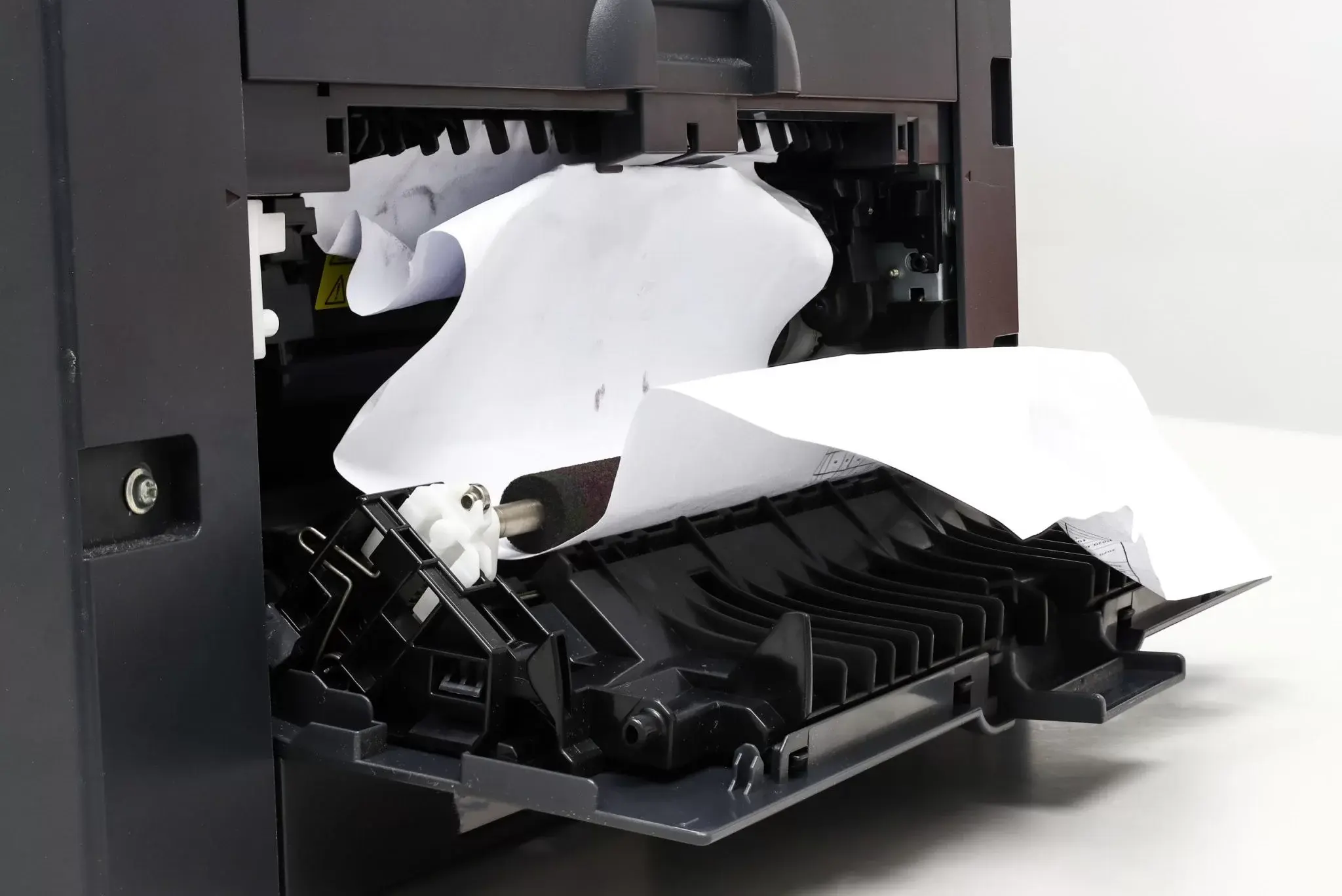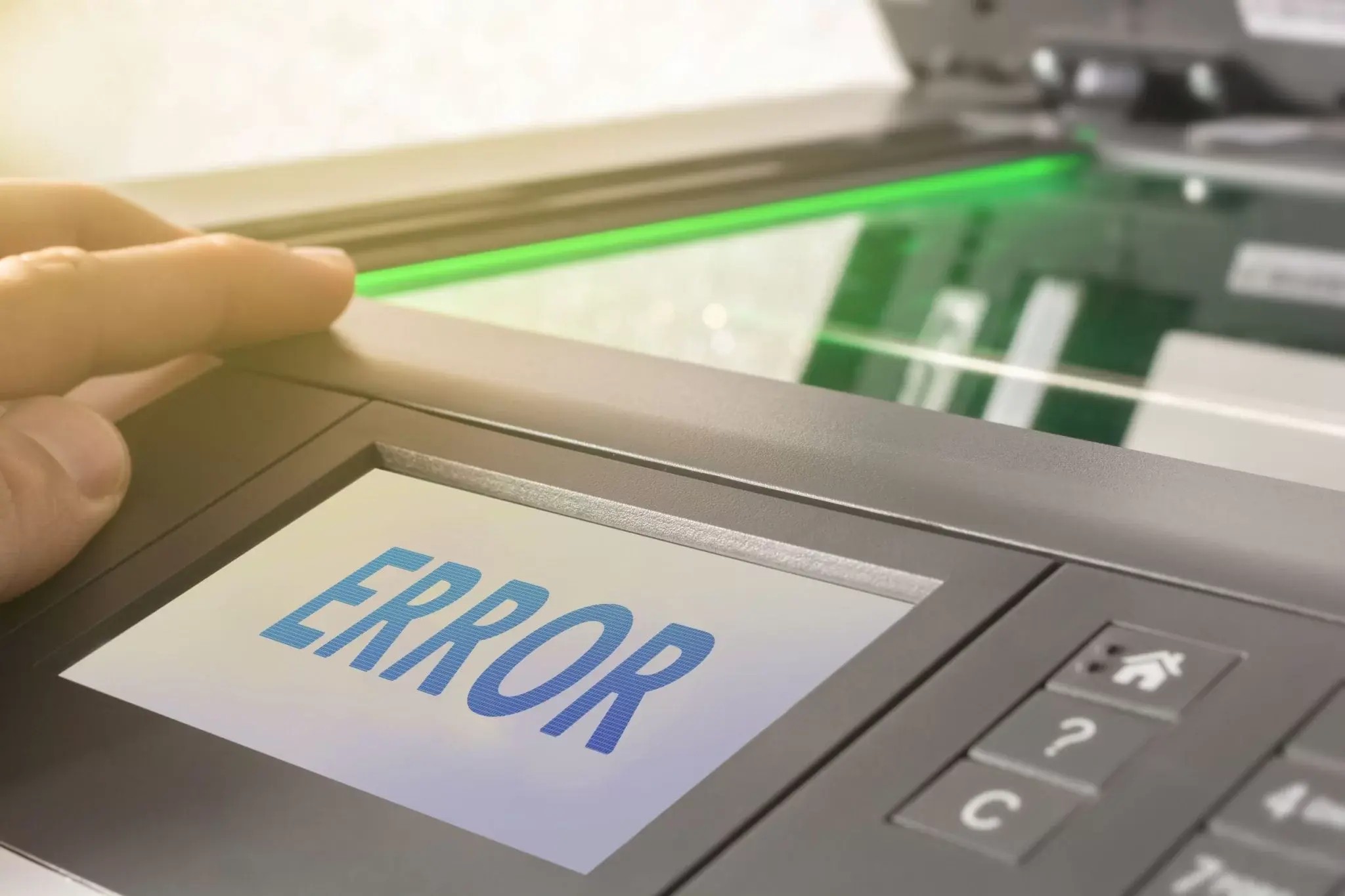Using a copy machine frequently can sometimes lead to issues over time. However, many of these problems are easy to fix if you know what to do. Let’s dive into the most common problems with copy machines, how they occur, and how you can fix them.
1. Paper Jams
Paper jams are probably the most annoying and frequent issue with copy machines. They can disrupt your workflow, especially when you’re in a rush. Paper jams occur when something goes wrong during the copying process, and the paper gets stuck inside the machine.
Why It Happens:
- Wrong Paper Type or Size: Using paper that doesn’t match the recommended specifications for the machine can cause it to jam.
- Misaligned Paper: If the paper isn’t loaded properly into the tray, it can crumple or misfeed, leading to jams.
- Dust and Debris: Over time, dust can build up inside the machine and interfere with the smooth movement of paper.
How to Fix It:
- Start by gently pulling out the jammed paper. Make sure you don’t tear it because leftover pieces can cause even more jams.
- Check that you’re using the correct type and size of paper. Adjust the paper guides so they hold the stack evenly.
- Clean the inside of the machine regularly to prevent dust buildup.
2. Wrinkled or Creased Paper

When your copies come out wrinkled or creased, it’s usually a sign that something is wrong with the paper feed or the fuser. These creases can make your documents look unprofessional, which is a big problem if you’re printing for clients or formal use.
Why It Happens:
- Worn Feeder or Fuser: If the feeder or fuser components are worn out, they might not grip the paper properly, leading to creases.
- Old or Damp Paper: If the paper is too old or stored in a damp environment, it can cause it to wrinkle during the printing process.
How to Fix It:
- Replace the paper in the feeder with fresh sheets that are dry and flat.
- If the problem persists, it might be time to call a technician to inspect the feeder and fuser for wear and tear.
3. Lines on Your Copies
Glaring black lines on your documents can be very frustrating, especially if you need clean and professional-looking prints. This problem is common and usually results from dirty scanner glass or a faulty fuser.
Why It Happens:
- Dirt or Debris on the Scanner Glass: Even small specks of dust can cause noticeable lines on your copies.
- Fuser Issues: A damaged or malfunctioning fuser can leave streaks on the paper as it heats and presses the toner onto the sheet.
How to Fix It:
- Clean the scanner glass carefully with a soft cloth and glass cleaner. Make sure there’s no dirt left behind.
- If the lines are still showing up, the issue might be with the fuser, and it’s best to get a technician to take a look.
4. Black Dots on Copies
If you notice tiny black dots scattered across your copies, this can also be linked to dust or dirt, but it’s focused more on certain areas like the scanner glass.
Why It Happens:
- Dust Particles on the Scanner Glass: Small dust particles can block the scanner from reading the document clearly, resulting in black dots on the final print.
- Toner Spillage: Sometimes, excess toner might spill inside the machine and cause random black marks on your copies.
How to Fix It:
- Clean the scanner glass regularly with a lint-free cloth to remove any dust. Make sure to check the edges and corners, as dirt often hides there.
- If the issue is with toner, carefully clean any spillage, but if it’s recurring, you might need to get the machine serviced.
5. Cartridge and Toner Problems

Cartridge and toner issues can range from minor annoyances to major problems that stop your copy machine from working altogether. These problems usually result in poor-quality prints.
Why It Happens:
- Incorrect Cartridge/Toner: Using the wrong model for your machine can cause compatibility issues, leading to poor print quality or no printing at all.
- Low or Empty Toner: If your toner is running low, your prints will start to fade, or the machine might refuse to print.
How to Fix It:
- Double-check that the cartridge and toner are compatible with your machine model. Always use the recommended products for your device.
- If the toner is running low, replace it or refill it as needed. If new cartridges still don’t work, consult with your supplier or technician for the correct type.
6. Overheating
Copy machines can overheat if used for long periods without breaks. When this happens, the machine might shut down on its own to prevent damage. Overheating is more than just inconvenient; it can shorten the lifespan of your machine.
Why It Happens:
- Poor Ventilation: If the machine is placed in a cramped space without airflow, it will heat up quickly.
- Continuous Usage: Running the machine non-stop, especially on high-volume tasks, can cause it to overheat.
- Old Machines: Older machines may struggle to keep up with high demand and overheat more frequently.
How to Fix It:
- Position the machine in a well-ventilated area, preferably in a room with AC or near a fan.
- Schedule regular breaks if you’re printing a large volume of documents.
- If overheating becomes a regular problem, it might be time to upgrade to a more reliable machine.
7. Copies Are Too Dark or Too Light
Inconsistent print quality, like copies that are too dark or too light, can make your documents hard to read and look unprofessional. This issue is often tied to settings or toner quality.
Why It Happens:
- Incorrect Density Settings: The machine’s density settings might be set too high or too low, affecting the output.
- Low-Quality Toner: Cheap or old toner might not produce even and clear prints.
How to Fix It:
- Adjust the density settings until you achieve the desired print quality.
- If that doesn’t work, consider replacing the toner with a high-quality one that is compatible with your machine.
Understanding these common problems and knowing how to fix them can keep your copy machine running smoothly and save you from unnecessary downtime!

I'm Morgan, the creator of VPNForMe — a site born from too many hours spent side-eyeing sketchy VPN reviews and buffering videos.
I wanted a place where people could get straight answers about privacy, streaming access, and which VPNs actually deliver — without the hype or tech jargon.

